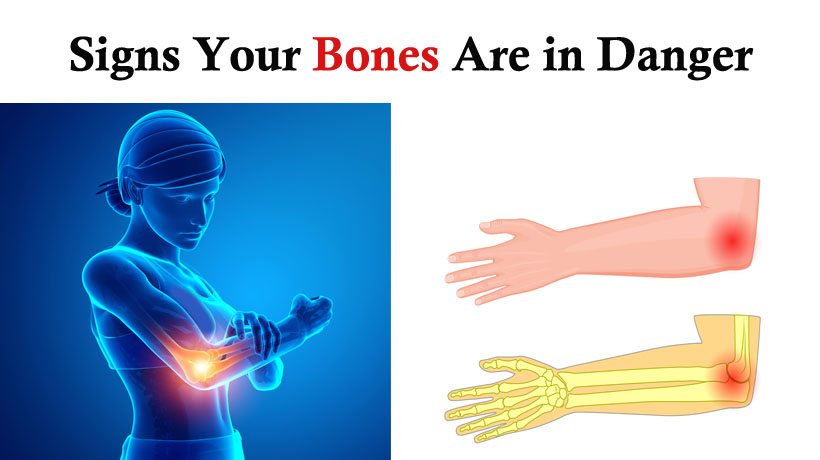Our bones give our bodies structure and protect our inner organs from damage. As we age, we start to lose bone density, which can cause osteoporosis and make our bones easy to break. You might not know how weak your bones are until they prevent you from getting through the day. Here are five early signs that your bones are weaker than you realize.
Bone pain
Pain is a sure sign that your bones are deteriorating. Bone pain can also indicate early osteoporosis, because you won’t know you have it until your bones suffer a physical trauma from a fall. According to a study published in the Journal of Pain Research, “Chronic pain can result from osteoporosis-induced skeletal deformities, joint imbalance, and tension in muscular structures…the most common symptom in patients with OP is severe or intolerable back pain.”
Receding gums
Your gums are attached to your jawbone and they protect your teeth’s roots and nerves. When your gums recede due to a loss of bone density, your teeth will lose anchorage and fall out or break. According to a research center for bone diseases from the National Institute of Health, “Women with osteoporosis are three times more likely to experience tooth loss than those who do not have the disease.” This is because as bone density gets lighter, the gums lose padding and strength, and recede to compensate.
Loss of grip strength
If you can’t hold or grip things as strongly as you used to, then it’s a sign that your bones are becoming weaker. It also makes you more susceptible to breaking bones, since you won’t be able to catch yourself if you fall. According to a study published in the Journal of Korean Medical Science, “Lower handgrip strength of the dominant hand is associated with reduced bone mineral density) in the spine, femoral neck, and total hip.” This is because your bones stabilize your muscles, and losing bone density means that your muscles won’t be able to support your body.
Brittle, fragile fingernails
Your fingernails are indicators of how the bones are in your body. Having brittle or fragile nails means that your bones are growing weaker. Fingernails contain the same proteins that your body’s bones have: keratin and collagen. According to a review published in the Journal of Functional Biomaterials, “Given the similarities in structure and composition of nail keratin and bone collagen proteins, changes in the nail keratin properties may be a marker of osteoporosis.” Therefore, analyzing your nails is an easy way to assess your bone health and density.
Your posture worsens
One of the first indicators of bone density deterioration as you age is a slumped or hunched posture. As the bones in your spine wear away, your muscles loosen, causing you to lose height, flexibility, and cause pain. Madeline R. Vann, Master of Public Health explained the relationship between bone density and posture for Everyday Health, a medical resource site. As she writes, “It can also result in dowager’s hump, the permanent arching of the back that results not only in chronic pain but also in challenges with dressing and moving through your daily tasks.”
Sources:
Paolucci, T., Saraceni, V. M., & Piccinini, G. (2016). Management of chronic pain in osteoporosis: challenges and solutions. Journal of Pain Research, 9, 177-86. doi:10.2147/JPR.S83574
https://www.bones.nih.gov/health-info/bone/bone-health/oral-health/oral-health-and-bone-disease
Kim, S. W., Lee, H. A., & Cho, E. H. (2012). Low handgrip strength is associated with low bone mineral density and fragility fractures in postmenopausal healthy Korean women. Journal of Korean Medical Science, 27(7), 744-7. https://www.ncbi.nlm.nih.gov/pmc/articles/PMC3390721/
Saeedi, P., Shavandi, A., & Meredith-Jones, K. (2018). Nail Properties and Bone Health: A Review. Journal of Functional Biomaterials, 9(2), 31. doi:10.3390/jfb9020031
https://www.everydayhealth.com/osteoporosis/osteoporosis-is-silent-until-it-hurts.aspx



